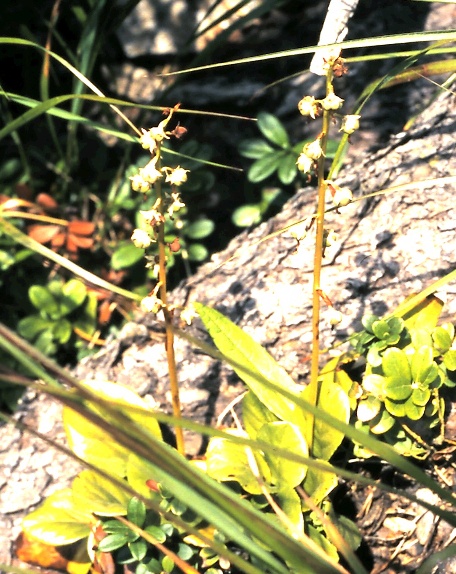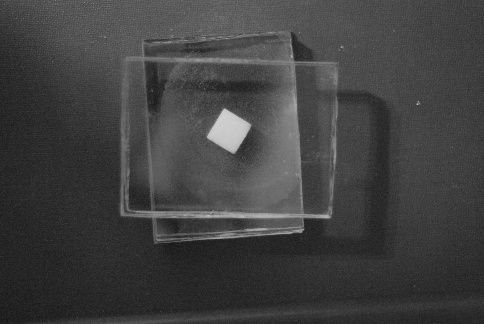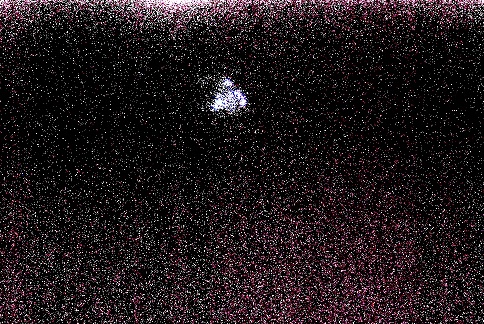home
Nederlands
Triboluminescence
Dutch
triboluminescentie
Introduction
 Some crystals give off a little flash of light when crushed.
This phenomenon is called
triboluminescence
. Sucar is an example. Table salt does not show triboluminescence.
Some types of candy work better than pure sucrose, in particular
Wint-O-Green
Lifesavers
.
These are flavoured with wintergreen oil (methyl salicylate).
It occurs in plants like Round-leaved Wintergreen (Pyrola rotundifolia),
here a photo from Val Munschauns in the
Swiss National Park
.
Some crystals give off a little flash of light when crushed.
This phenomenon is called
triboluminescence
. Sucar is an example. Table salt does not show triboluminescence.
Some types of candy work better than pure sucrose, in particular
Wint-O-Green
Lifesavers
.
These are flavoured with wintergreen oil (methyl salicylate).
It occurs in plants like Round-leaved Wintergreen (Pyrola rotundifolia),
here a photo from Val Munschauns in the
Swiss National Park
.
Observation
Dark adaptation
It it quite easy see triboluminescence for yourself. However the
flashes of light are quite feeble and only visible for the
dark adapted eye. So sit for at least a ¼ hour in complete darkness or wake up
at night without using bright light.
A short exposure
to dim light will not undo the adaptation of the eye to low light
levels. Note that some people suffer from nightblindness, they
will have trouble observing triboluminescence.
Crushing sucar crystals
When your eyes are adapted to darkness, so called
scotopic
vision, the sensitivity for light is 10000 to 100000 times larger than in
daylight
and you can undoubtably see light when you crush sucar either as
sucar cubes or as crystal sucar. Best is to use or improvise a glass
mortar, so you can see what happens.
At last resort you can use your teeth .
You will not be able to see
any colour as scotopic vision is colourblind.
Photos
Photographing triboluminescence is not easy. I crushed a sucar cube
in total darkness between 18 mm laminated glass sheets. A digital photo was
made with open shutter, 50mm lens f/1.4 ISO 3200.
The flash of light was clearly visible for the unaided eye.
The result was a black picture. However digital processing
(for the R-,G- and B-plane setting all pixels with 8-bit value 7 or higher
to 255)
reveiled a clear impression of the light flash.


Explanation
Not very much is known about the exact mechanism triboluminescence.
You can imagine that some electrons get dislodged
when a crystal is broken. Apparantly the resulting electric field is
momentarily large enough to produce a spark.
home (English)
Nederlands
 Some crystals give off a little flash of light when crushed.
This phenomenon is called
triboluminescence
. Sucar is an example. Table salt does not show triboluminescence.
Some types of candy work better than pure sucrose, in particular
Wint-O-Green
Lifesavers
.
These are flavoured with wintergreen oil (methyl salicylate).
It occurs in plants like Round-leaved Wintergreen (Pyrola rotundifolia),
here a photo from Val Munschauns in the
Swiss National Park
.
Some crystals give off a little flash of light when crushed.
This phenomenon is called
triboluminescence
. Sucar is an example. Table salt does not show triboluminescence.
Some types of candy work better than pure sucrose, in particular
Wint-O-Green
Lifesavers
.
These are flavoured with wintergreen oil (methyl salicylate).
It occurs in plants like Round-leaved Wintergreen (Pyrola rotundifolia),
here a photo from Val Munschauns in the
Swiss National Park
.

